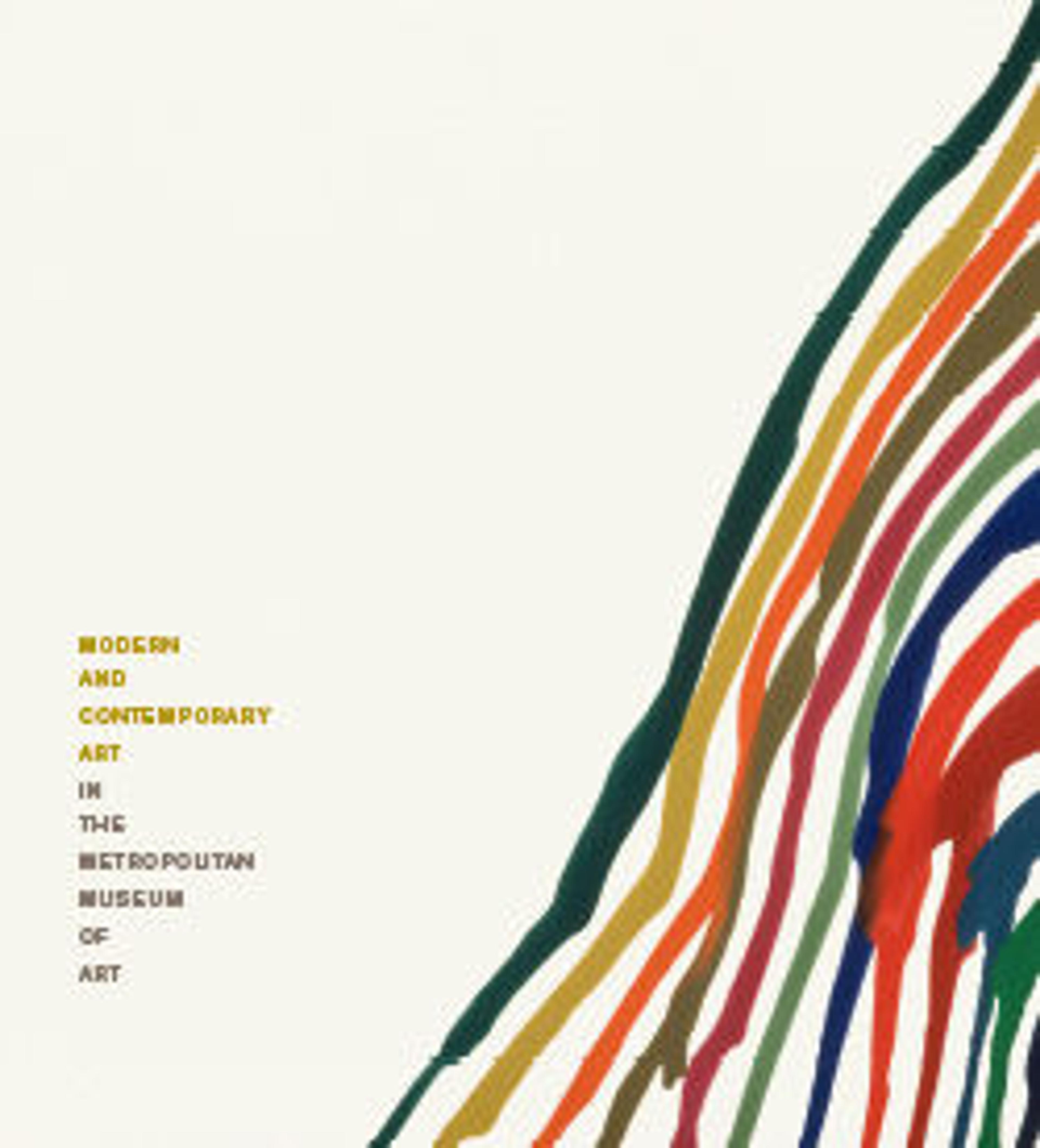Alpha-Pi
After a visit to New York in April 1953, where they saw the recent paintings of Helen Frankenthaler, Washington-based friends Morris Louis and Kenneth Noland began to similarly stain raw canvases with diluted pigment, rather than apply it with a brush. Experimenting with different painting techniques and media, compositional formats and canvas sizes in the nine remaining years before his untimely death (from lung cancer), Louis produced an astonishingly large body of work. These paintings are divided into three basic series: the Veils (1954–60), the Unfurleds (Summer 1960–January/February 1961), and the Stripes (January/February 1961–Summer 1962).
Alpha-Pi is one of about 150 Unfurleds he created, generally on mural-size canvases (this one measures over 8 feet by 14 feet). In all of them, irregular rivulets of different colors flow diagonally down toward the lower center of the canvas, but never quite meet; the center of the unprimed canvas remains blank. Heavily diluted, the poured colors soak into the canvas, becoming one with the surface, and maintain the flatness of the modern picture plane. Color retains its optical purity (since it is not used to describe or define something else) and there is no sense of narrative, image, or perspectival space as in traditional painting. Eschewing illusionistic references, the artist forces the viewer to focus solely on the painting's formal elements-color, size, and shape and the vibrant, light-filled space they inhabit.
Alpha-Pi is one of about 150 Unfurleds he created, generally on mural-size canvases (this one measures over 8 feet by 14 feet). In all of them, irregular rivulets of different colors flow diagonally down toward the lower center of the canvas, but never quite meet; the center of the unprimed canvas remains blank. Heavily diluted, the poured colors soak into the canvas, becoming one with the surface, and maintain the flatness of the modern picture plane. Color retains its optical purity (since it is not used to describe or define something else) and there is no sense of narrative, image, or perspectival space as in traditional painting. Eschewing illusionistic references, the artist forces the viewer to focus solely on the painting's formal elements-color, size, and shape and the vibrant, light-filled space they inhabit.
Artwork Details
- Title:Alpha-Pi
- Artist:Morris Louis (American, Baltimore, Maryland 1912–1962 Washington, D.C.)
- Date:1960
- Medium:Magna on canvas
- Dimensions:8 ft. 6 1/2 in. × 14 ft. 9 in. (260.4 × 449.6 cm)
- Classification:Paintings
- Credit Line:Arthur Hoppock Hearn Fund, 1967
- Object Number:67.232
- Rights and Reproduction:© 1960 Morris Louis
- Curatorial Department: Modern and Contemporary Art
More Artwork
Research Resources
The Met provides unparalleled resources for research and welcomes an international community of students and scholars. The Met's Open Access API is where creators and researchers can connect to the The Met collection. Open Access data and public domain images are available for unrestricted commercial and noncommercial use without permission or fee.
To request images under copyright and other restrictions, please use this Image Request form.
Feedback
We continue to research and examine historical and cultural context for objects in The Met collection. If you have comments or questions about this object record, please contact us using the form below. The Museum looks forward to receiving your comments.
